Get Free Guides To Ascension & Global Consciousness
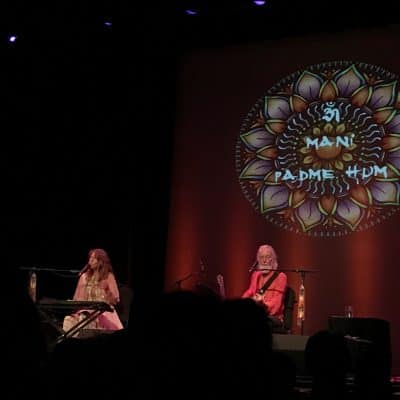
If you’re a yogi, chances are you have been introduced to Deva Premal’s work, likely on a regular basis as her music is pretty prolific in yoga communities around the world. She is most known for introducing Sanskrit mantras into the mainstream. She composes and produces much of her work with her life partner Miten and they even have their own music label: Prabhu Music. In addition to CD’s you can buy to learn more about her music, you can also see her in concert which we did recently when they came to Marin earlier this summer.
They have successfully brought ancient Tibetan and Sanskrit mantras into the contemporary and modern world in a way that people can get their heads and hearts around and even embrace. If you haven’t experienced any of their music, you will find it a bit mesmerizing at first as it has this quality to it especially given that there is so much repetition in the words. This of course, is done by design.
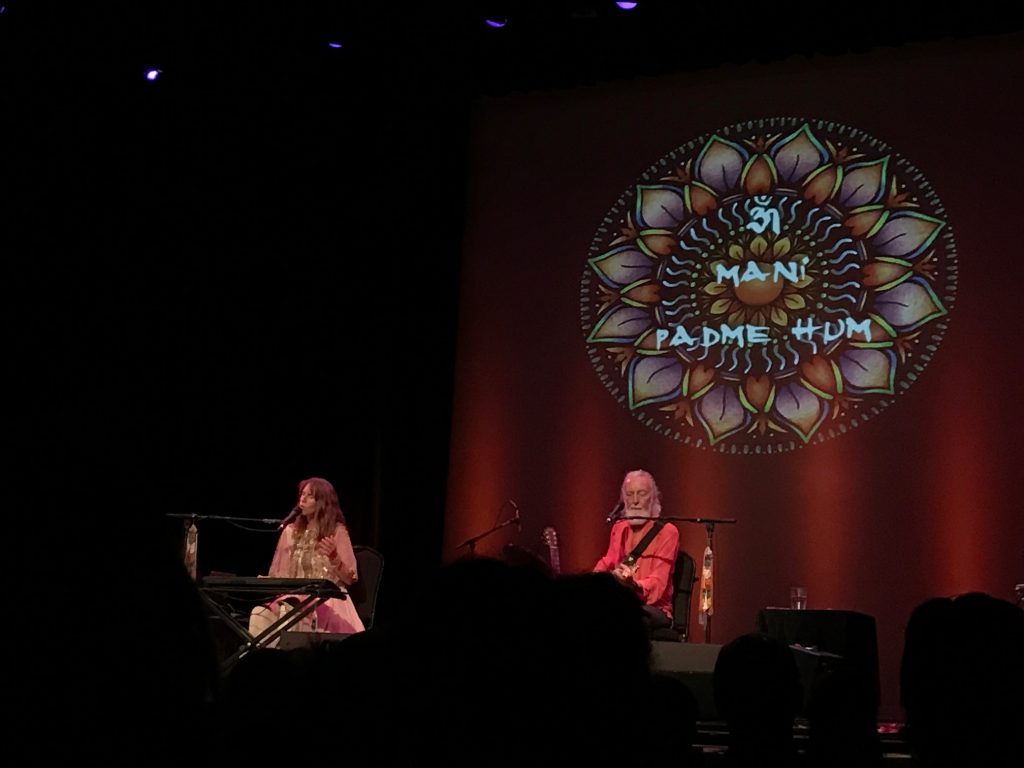
If you’re a yogi, chances are you have been introduced to Deva Premal’s work, likely on a regular basis as her music is pretty prolific in yoga communities around the world. She is most known for introducing Sanskrit mantras into the mainstream. She composes and produces much of her work with her life partner Miten and they even have their own music label: Prabhu Music. In addition to CD’s you can buy to learn more about her music, you can also see her in concert which we did recently when they came to Marin earlier this summer.
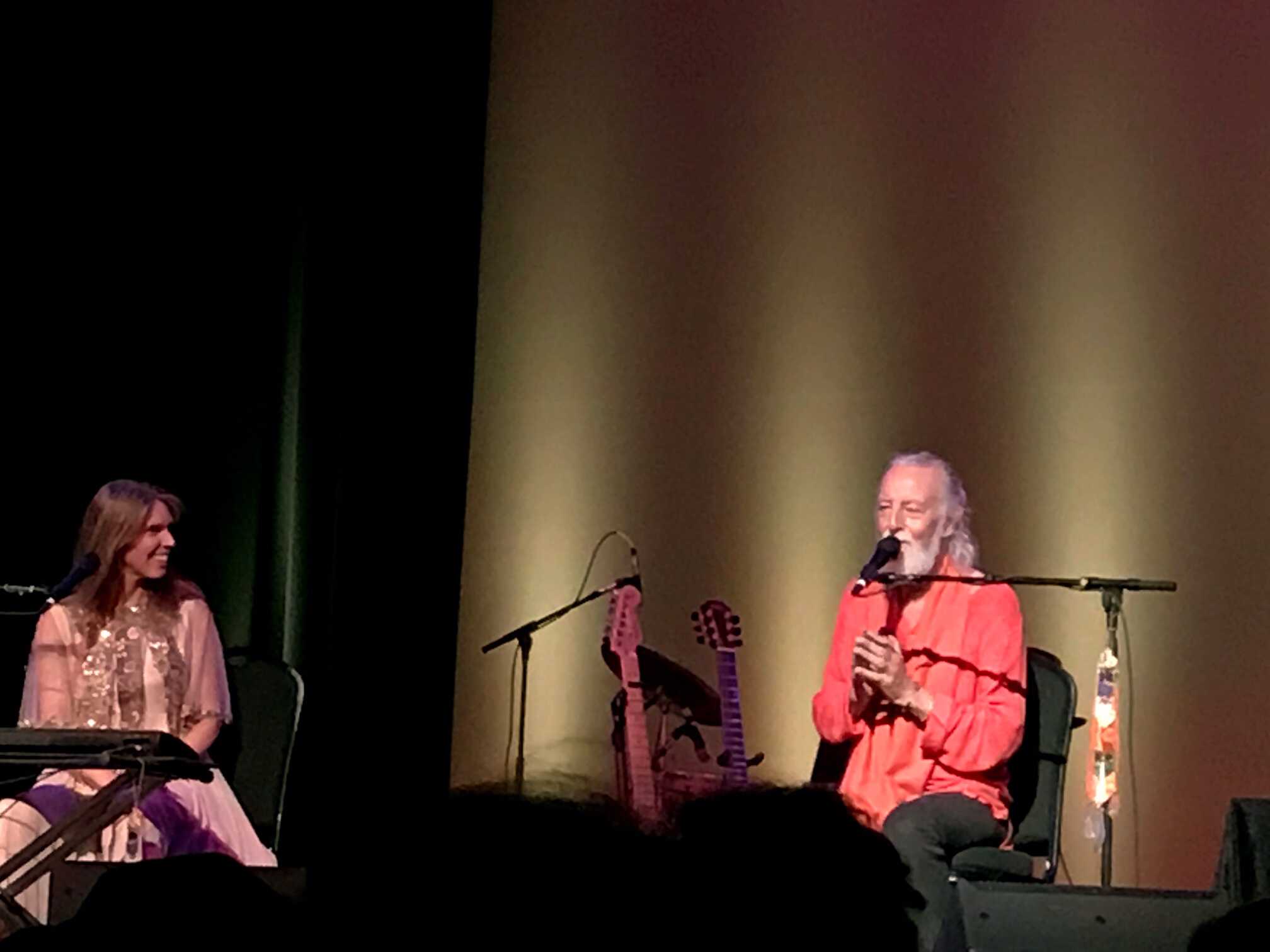
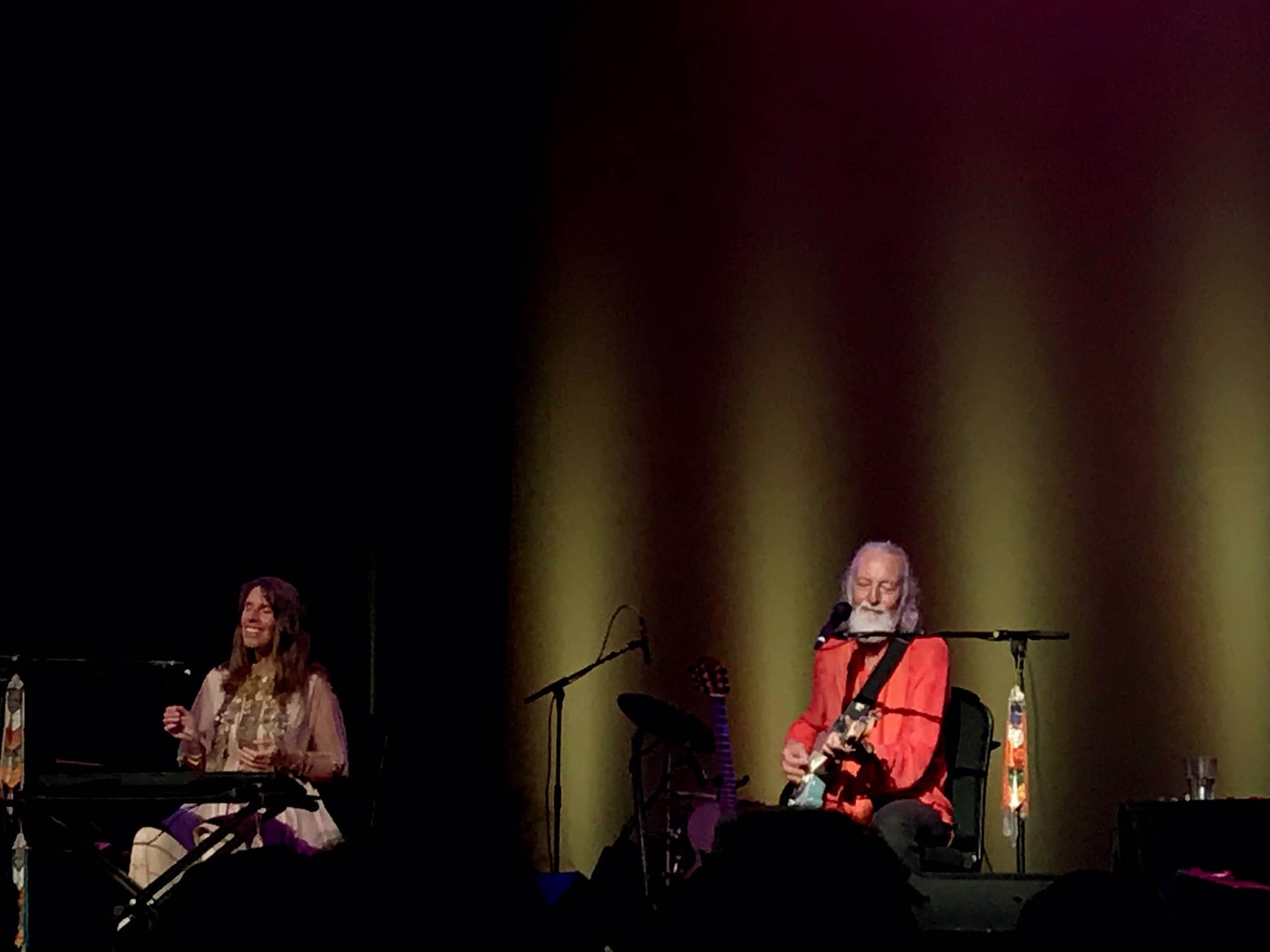
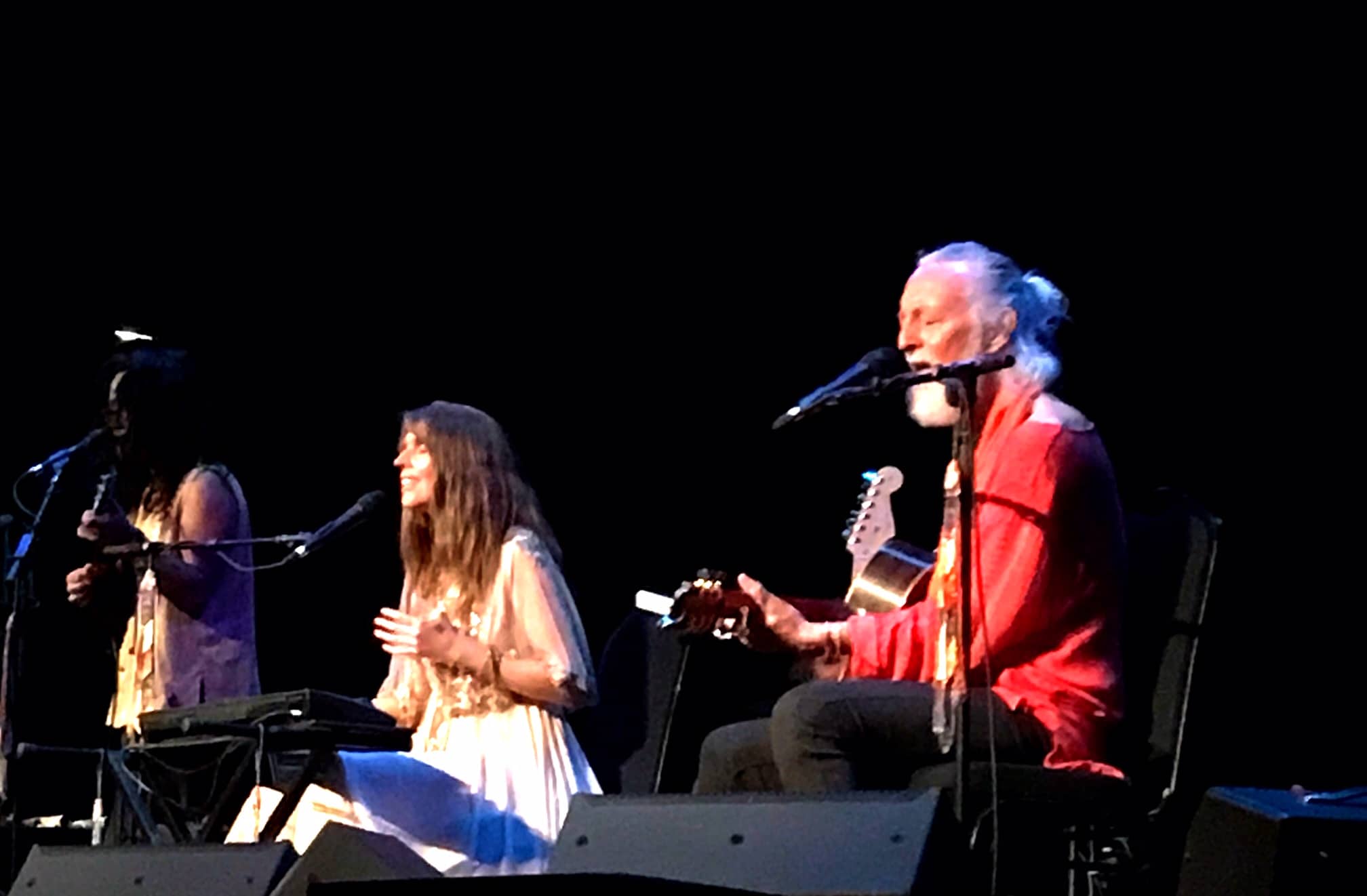
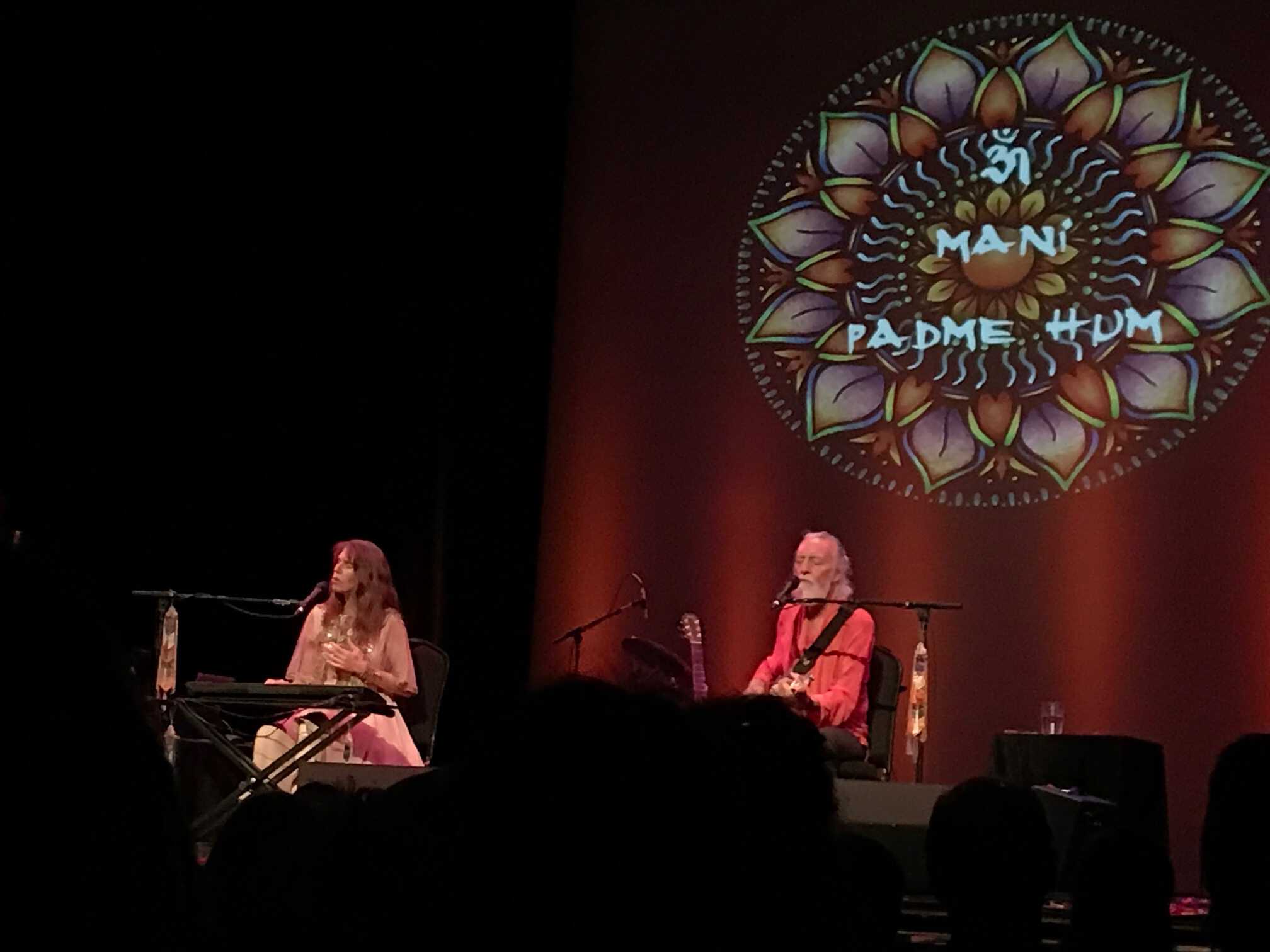
They have successfully brought ancient Tibetan and Sanskrit mantras into the contemporary and modern world in a way that people can get their heads and hearts around and even embrace. If you haven’t experienced any of their music, you will find it a bit mesmerizing at first as it has this quality to it especially given that there is so much repetition in the words. This of course, is done by design.
Not everyone is so passionate and immediately drawn to something as ancient as Sanskrit, especially if you’re German born. But, she didn’t have an ordinary German upbringing. In fact, Deva’s mother was a teacher of medieval music, who offered piano, harpsichord, and recorder lessons as well as leading a local church choir. It turns out that Deva’s father also had a spiritual side. As a a visual artist, he started Middle Eastern drumming when Deva Premal was born. On top of these nuances and influences, both parents had embraced Zen spirituality and Eastern philosophy, well before Deva’s birth, and had a daily practice of chanting in Sanskrit. A rarity to say the least, but this led to Deva’s natural passion and love for Sanskrit, which began early on in her life. She remembers her father singing the Gayatri Mantra to her at night as a lullaby. Deva always loved creating music together, through community.
Imagine joining an ashram at age 17 and how that might just transform your life? This is exactly what Deva did. At Osho’s ashram in India, she studied Zen theology, practiced Sanskrit mantras, Sufis dances, Native American chanting, African drumming, and more. It was here she met British-born Miten (known back then as Andy Desmond in the music world) at age 20, who at the time was twenty years older. He went from playing with greats like Fleetwood Mac, Hall and Oates and Ry Cooder in large stadiums worldwide to playing and singing sacred music.
It was a Zen parable by Bhagwan Shree Rajneesh (Osho) which transformed Miten’s life:
“On a full-moon night, Chiyono, a nun, was carrying a bucket of water from the well. Just as she was noticing the moon’s reflection in the water, the bucket broke. At that moment she looked up at the moon and became enlightened – realizing she had spent her whole life focused on the reflection of “the real thing,” instead of on the real thing itself.”
Miten began to see that the commercial side of the music industry was just a reflection of the real thing. He said, “it was as if music were the key to something greater – a profound inner peace and sense of connection with the infinite.”
He served as a channel for the ashram community, offering up original songs that celebrated Osho’s teachings which led to Deva and Miten traveling around the globe together singing and teaching through their music. I remember hearing Deva sing for the first time — it was in Fiji during the Oneness Retreat I did nearly two decades ago now and so I purchased a couple of her CDs and to this day, they are played when we meditate or simply want to ‘connect’ while we are busy doing other things.
We had an opportunity to not just hear Deva and Mitten perform in concert recently in Marin, but meet them back stage and in the Green Room before the event. The music, which was a powerful and moving experience, is not just beautiful to listen to, but is healing as well. Many people don’t realize just powerful music can be as a catalyst for healing. Deva and Miten receive letters from fans telling them of their own healing journey from listening to and chanting along with their renowned signature mantras.
If you’re new to music as a healing modality and are wondering how it it possible for music in general, and mantras in particular, to facilitate healing – especially on the physical level, then read on. First, let’s recognize the power of gratitude and what embracing it on a daily basis can do to your state-of-mind and well-being.
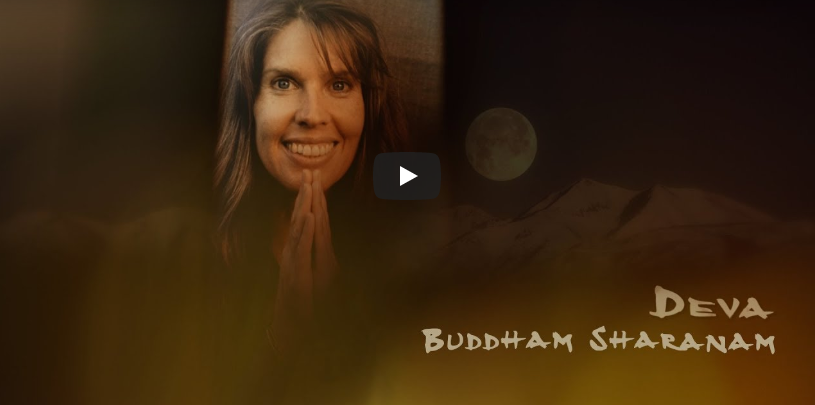
Buddham Sharanam, featured on Deva Premal’s recent best-selling mantra album release DEVA, is a prayer from the Buddhist tradition offering a deeply meditative moment to bow down in gratitude to our teachers, community and inner practice of meditation.
“Buddham sharanam gachchami
Dhammam sharanam gachchami
Sangham sharanam gachchamiIn gratitude we bow to the Awakened Ones
In gratitude we bow to the teachings of the Awakened Ones
In gratitude we bow to the commune of the Awakened Ones”
Deva and Miten participate in what is called Medicine of Mantra Events around the world where they join leading doctors for insightful discussions about these questions, all of which are at the cutting edges of meditation, science and medicine. For example, earlier this year, they explored The Biology of Mantra: The Science of Harmony and Health with Bruce H. Lipton, PhD, an internationally recognized leader in bridging science and spirit. They also do live Facebook chats as well.
An integral and beautiful addition to their music at their concerts around the world is Manose, who hails from Nepal — Boudha Nepal to be exact, which sits along the ancient route leading from the Himalayan mountains down into the Kathmandu valley. He’s been playing the bamboo flute as a child but his real relationship with music began when Manose heard about an elderly man named Madan Dev Bhatta (a disciple of Ustad Bishmillah Khan) who played the shenai. Madan initiated Manose into the study of classical raga music, often known as North Indian classical music.

From raga music, Manose improvises from his classical raga music teachings, inspired by the swaying sweetness of a samba, or the lightening fast lines of Celtic masters. When he was asked what or who has had the greatest musical influence on his playing, he responded: “this very moment of existence and silence”.
Here are a few more magical shots from the concert we attended this summer.
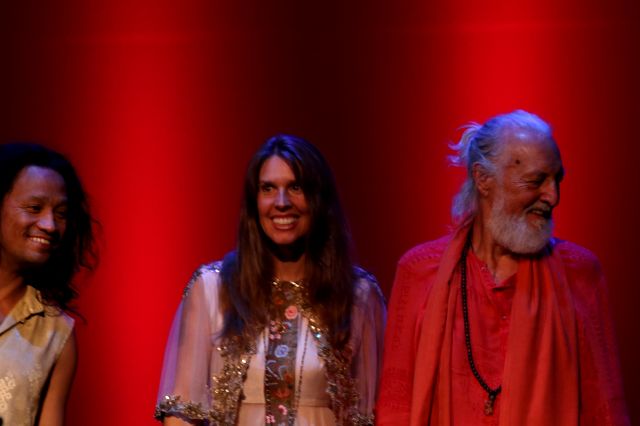
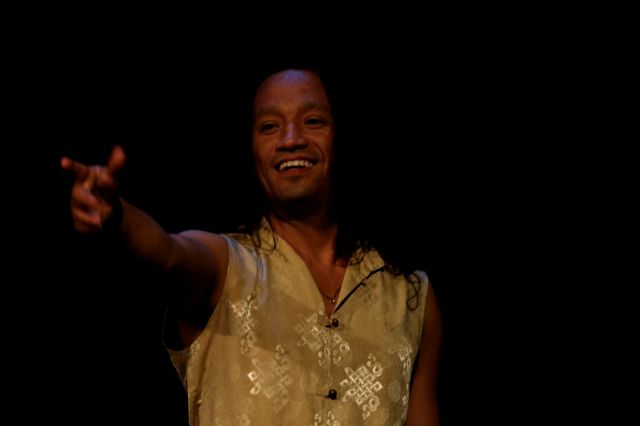
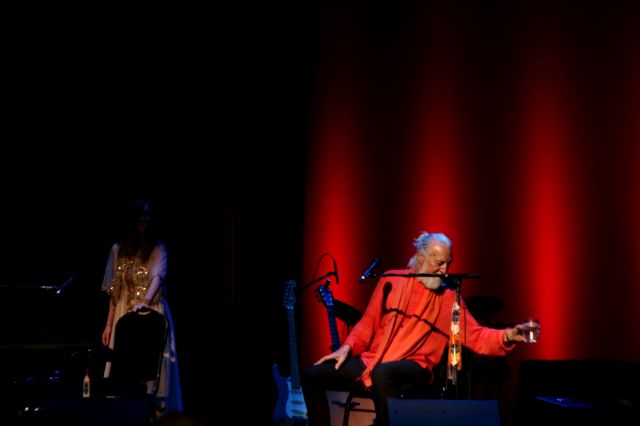
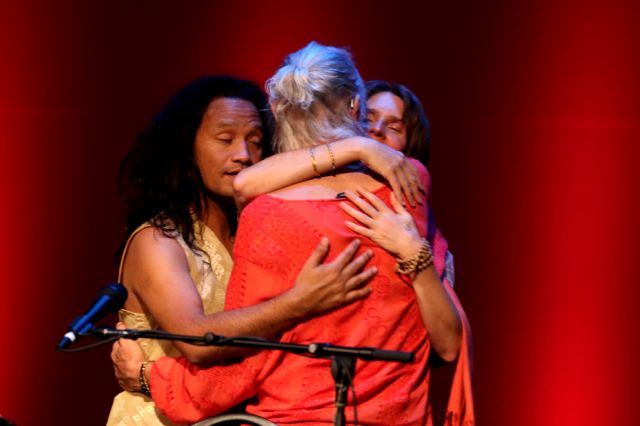
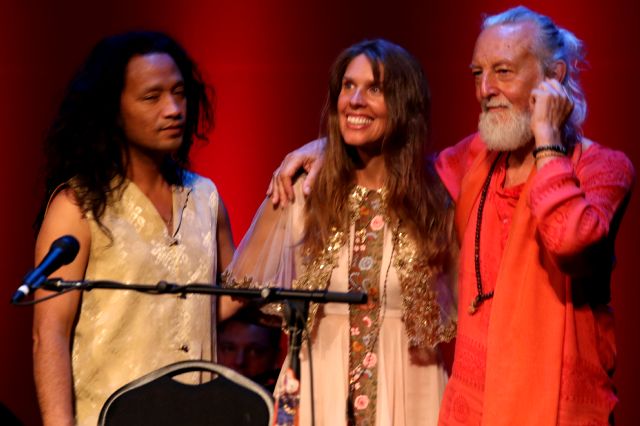
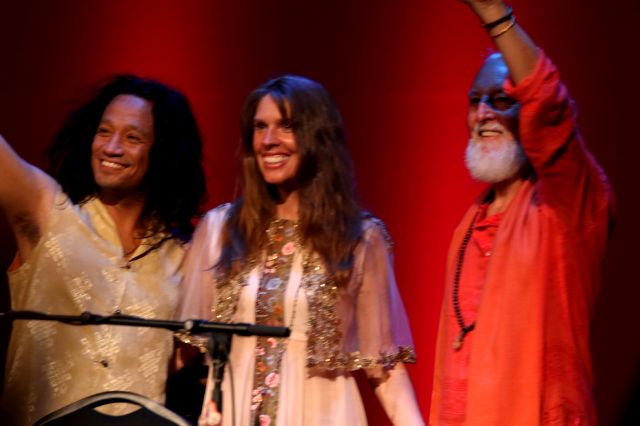
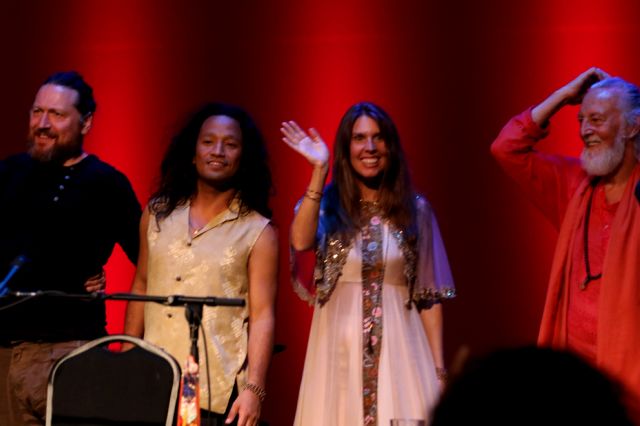
Below, taken in the Green Room.
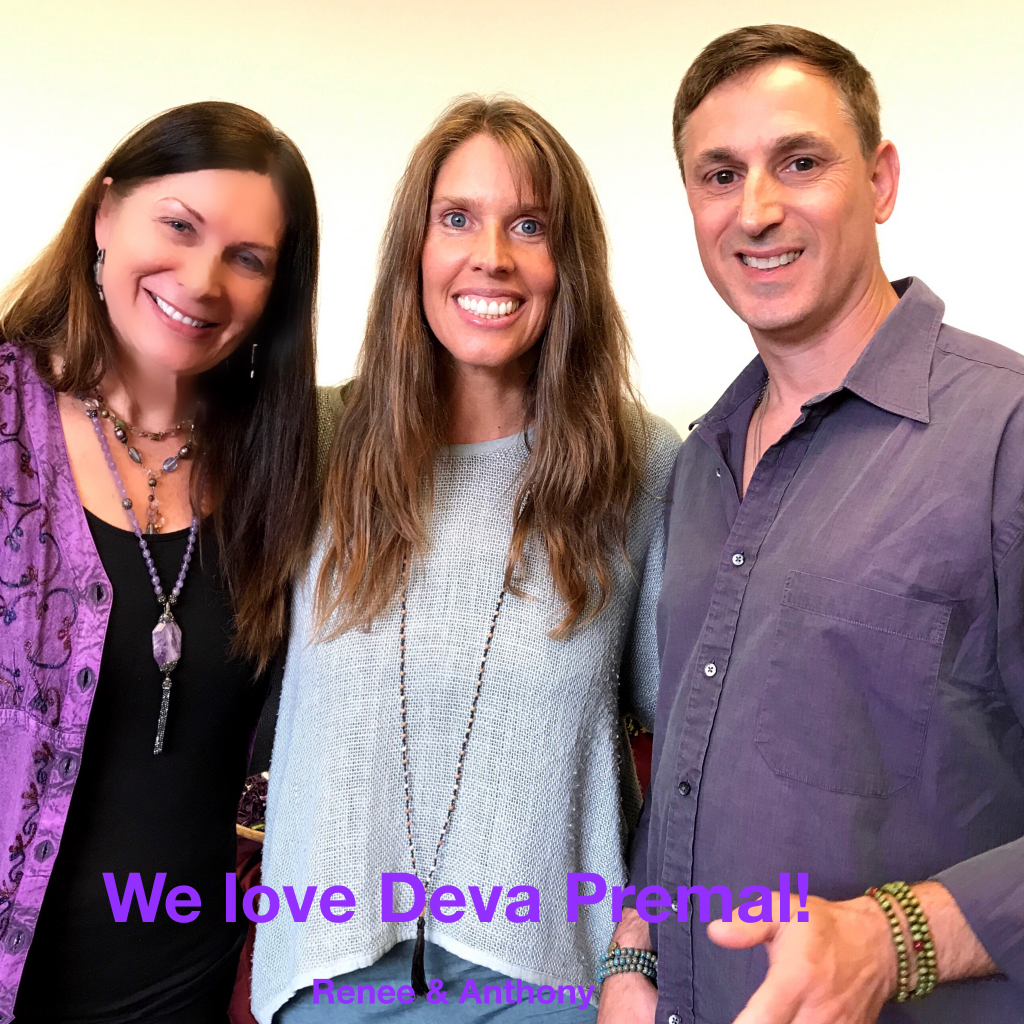
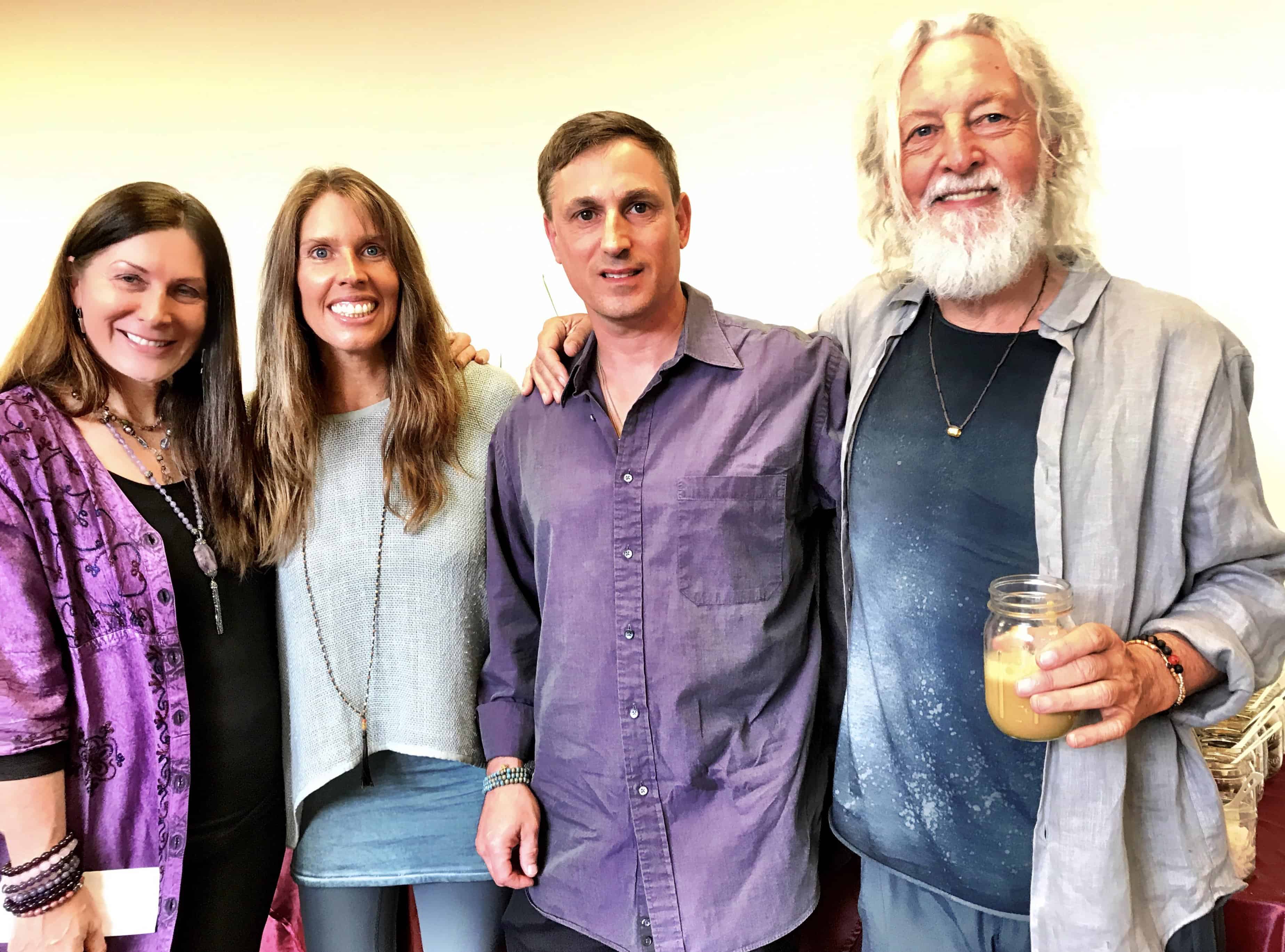
Also worth noting is their GAYATRI FUND (NEPAL: Compassion in Action) which they started after Nepal’s devasting earthquake in April 2015. Deva, Miten and Manose (who was born and raised in Nepal) created this fund out of severity of the earthquake and its ramifications and donated over 120,000 Euros to Nepal. The money was used to buy food, medicines, tents and tarps in hard struck villages where aid from governmental organisations or bigger NGOs was not arriving for logistical reasons. The invitation to help was extended to the sangha during their tours and, in Miten’s words, “It was like people hearing the call. Every concert we did raised at least 2,000 euros. In Moscow people donated 11,000 euros in only one concert.”
After the most vital needs of the earthquake victims were met, efforts have turned to rebuilding basic infrastructure in the villages and providing support and education for the children, many of them orphans.
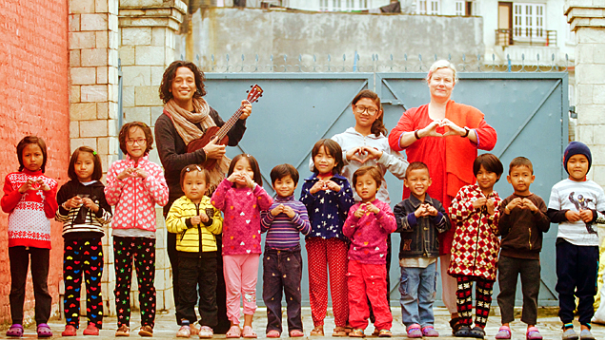
For more information on Deva Premal and Mitten’s work, be sure to visit their website which includes where they’ll be performing and leading workshops and events as well.